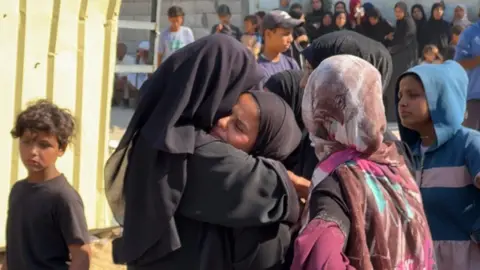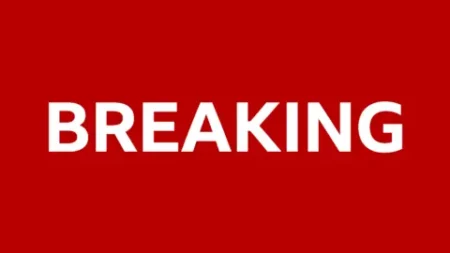In an unfolding tragedy that highlights the dire humanitarian crisis in Gaza, the recent events surrounding a “women-only” aid distribution day have brought to light both the desperate struggles of ordinary people and the systemic issues affecting aid efforts in the region.
Just hours ago, the announcement of a food distribution by the Gaza Humanitarian Foundation (GHF) had promised hope to those in desperate need. Specifically aimed at women, the initiative featured a social media post showcasing illustrations of smiling female recipients. The intention was to create a safe environment for women to receive essential supplies—particularly crucial for those like Mary Sheikh al-Eid, a widowed mother of seven, who had been relying solely on lentil soup for sustenance. Tragically, this effort ended in horror, as Mary was shot dead while attempting to access aid at the distribution site.
The call for women-only attendance was made clear by the GHF post, emphasizing that men should stay away from the site by announcing, “only women are welcome to come and receive a food box.” Despite the good intentions behind this initiative, the reality faced at the distribution locations has been chaotic and deadly. In Gaza, where two million people are in dire need of aid, there are only four distribution sites, but typically only two are operational at any given time, increasing the pressure on each distribution event.
On the day in question, as Mary and her sister Khawla made their way to the designated aid point in southern Rafah, they encountered an already chaotic scene upon arrival. Witnesses describe overwhelming crowds of women who were met with violence from security forces trying to manage the situation. Khawla recounted how the women were met with pepper spray and stun grenades, which only escalated the turmoil. As chaos ensued, the sisters were separated in the panic.
Khawla received unimaginable news shortly thereafter: Mary had been shot in the head and was being rushed to a nearby field hospital run by the Red Cross. An unbearable weight fell upon Khawla as she ran to the hospital, only to be told that her sister had succumbed to the injury. This devastating personal loss reflects a far larger issue, as over 1,000 Palestinians have reportedly died since the GHF system was established in late May, many of those fatalities occurring near heavily policed aid distribution sites.
Eyewitness accounts from various former servicemen and aid workers reveal a shocking level of violence. Anthony Aguilar, a former US soldier with experience in the area, spoke to the indiscriminate use of force he witnessed against vulnerable civilians seeking aid. Despite military claims of firing “warning shots,” the reality for many is one of horror and loss amid ongoing conflict.
Furthermore, the implementation of the GHF system raises serious ethical concerns among humanitarian aid organizations. Since prior aid networking systems were dismantled, rights groups accuse the GHF—backed by Israeli and US interests—of undermining existing protocols that provided safer and more effective distribution of aid. The United Nations has distanced itself from GHF, deeming the system potentially harmful and unethical.
On a broader scale, the situation continues to deteriorate in Gaza as reports emerge of malnutrition-related deaths on the rise. With daily hardships facing the population, Mary Sheikh al-Eid’s death symbolizes the heart-wrenching impact of this conflict—a narrative repeated across families and communities in a land desperate for peace and stability. Her sister, Khawla, lamented the system, calling the aid distributions “death traps,” a chilling testament to the perilous conditions surrounding humanitarian efforts.
In conclusion, the alarming narrative of Mary Sheikh al-Eid serves not only as an individual tragedy but also as a critical reflection on the ongoing crisis in Gaza. It underscores the urgent need for a reassessment of how aid is delivered, ensuring safer access for the civilians who urgently require help, all while addressing the broader implications of the persistent conflict and humanitarian emergency entrenched in the region. The situation cries out for meaningful intervention to protect vulnerable lives caught in this turmoil, as the world looks on with a mix of sorrow and outrage.












